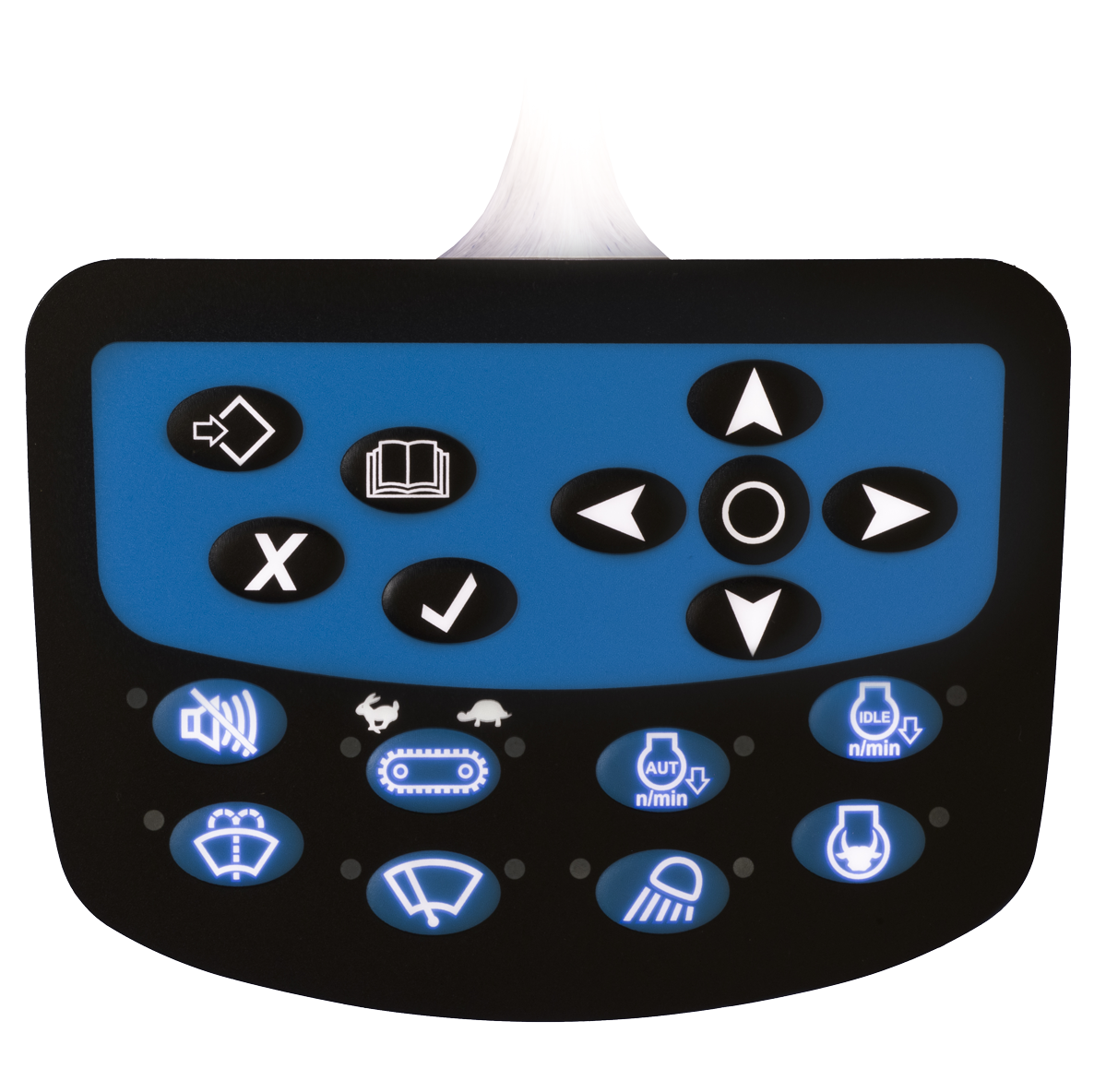The Advantages of Membrane Switches Over Mechanical Switches in Harsh Environments
The Advantages of Membrane Switches Over Mechanical Switches in Harsh Environments
Blog Article
Why Membrane Switches Are Essential for Sturdy Control Equipment
Membrane buttons play a pivotal function in guaranteeing the toughness and dependability of control systems throughout numerous sectors. Their one-of-a-kind building enables them to withstand difficult ecological variables such as moisture, temperature extremes, and physical wear. This resilience not just prolongs the life expectancy of the systems they serve yet also decreases upkeep requirements. As we explore the diverse advantages of membrane layer buttons, it comes to be evident that their relevance goes beyond plain functionality, influencing customer experience and operational performance. What more implications do these qualities hold for the future of control system design?
Introduction of Membrane Buttons
Membrane switches are functional and reliable parts frequently made use of in different electronic control systems. These buttons include several layers, including a graphic overlay, a spacer layer, and a printed circuit layer. The graphic overlay offers both functional and visual layout, while the spacer layer guarantees that the switches are turned on only when pressed. The published circuit layer consists of conductive traces that complete an electrical circuit when the membrane layer is pressed, making it possible for the tool to react to user inputs.
Membrane buttons are frequently favored in applications needing a compact and light-weight layout, making them excellent for portable tools, clinical equipment, and industrial machinery. They can be personalized to satisfy certain user needs and can incorporate numerous attributes such as backlighting, responsive responses, and numerous shades. Additionally, membrane layer buttons are resistant to dirt, dampness, and impurities, making them appropriate for environments where toughness is necessary.
Advantages of Resilience
In lots of applications, the toughness of membrane switches deals significant advantages that enhance their overall efficiency and dependability. These buttons are developed to stand up to severe settings, making them ideal for usage sought after conditions such as high moisture, severe temperature levels, and exposure to chemicals. Their durable building aids to stop damages from physical impact, ensuring resilient capability and decreasing the need for regular substitutes.
Additionally, membrane layer buttons are immune to deterioration, which is important in applications where constant interaction happens. This sturdiness converts to reduce upkeep prices, as companies profit from lowered downtime and less service disruptions. The encapsulated layout of membrane changes safeguards internal elements from dust and moisture ingress, additional adding to their life expectancy (membrane switch).
An additional benefit is their capability to keep constant performance over time. With a high tolerance for mechanical stress and anxiety, these buttons preserve their tactile responses and electrical honesty, ensuring user satisfaction. Inevitably, the toughness of membrane layer changes not only enhances operational performance however also fosters confidence in their integrity, making them a recommended choice for control systems throughout different markets.
Applications in Different Industries
Durable control systems employing membrane layer buttons discover considerable applications across a series of sectors, each gaining from the special characteristics these switches provide. In the clinical industry, membrane switches are vital for gadgets such as person monitors and analysis equipment, where integrity and convenience of cleansing are extremely important. Their resistance to dampness and impurities guarantees they preserve functionality in sterile atmospheres.
The automobile industry leverages membrane layer buttons for dashboard controls and infomercial systems, where they offer streamlined, low-profile user interfaces that boost customer experience. These switches are likewise made to stand up to harsh conditions, consisting of exposure to severe temperatures and vibrations.
In commercial settings, membrane layer buttons are generally made use of in equipment control board, supplying responsive comments and resilience essential for high-usage applications. Their capacity to resist chemicals makes them appropriate for manufacturing atmospheres where spills and impurities are constant.

Consumer electronic devices, such as kitchen area devices and remotes, also utilize membrane layer buttons for their convenience and cost-effectiveness. In general, the versatility and robust nature of membrane changes make them indispensable throughout various markets, ensuring efficient procedure and durability in control systems.
Style and Visual Allure
While functionality is vital, the layout and aesthetic charm of control systems outfitted with membrane layer buttons play an important duty in user involvement and total experience (membrane switch). The aesthetic design of these buttons can substantially affect user understanding and communication. A properly designed membrane switch boosts the appearance of the tool, making it a lot more appealing to users and promoting a link between the customer and the item
Membrane switches over use a large amount of flexibility in style, allowing producers to tailor graphics, colors, and textures to straighten with brand name identity and item visual appeals. Making use of vivid colors and unique patterns can attract interest, while responsive feedback can enhance the customer's interaction with the device. Additionally, the capacity to incorporate LED indications and backlighting right into the membrane layer button layout supplies both practical and aesthetic advantages, improving visibility and usability in numerous settings.

Enhancing User Experience

Moreover, membrane layer buttons can be customized to include graphical user interfaces, enhancing usability by presenting information in a clear and intuitive way (membrane switch). This personalization can include symbols, labels, and color coding that guide individuals via complicated functionalities with convenience. In addition, their adaptability permits assimilation in numerous environments, guaranteeing constant efficiency whether in industrial machinery or consumer electronic devices
The toughness of membrane switches additionally plays an important duty in customer experience. By standing up to harsh conditions and prolonged usage, these buttons lower the chance of system failures, hence advertising reliability and individual confidence. Eventually, the strategic use of membrane layer switches over not just raises functionality yet likewise substantially improves individual interaction with control systems, making them a vital part in contemporary design.
Conclusion

Report this page